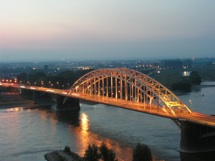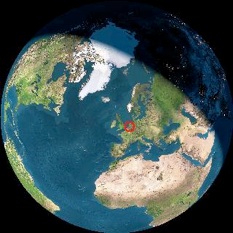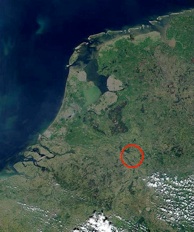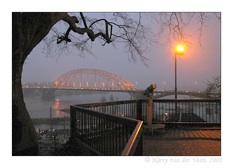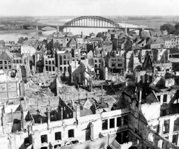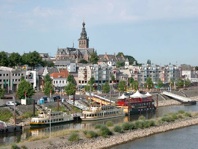ITP 2011 -
2nd International Conference on Interactive Theorem Proving

ITP 2011 -
2nd International Conference on Interactive Theorem Proving
Bid to host by the Radboud University Nijmegen
The Institute is well-known in different fields of computer science; lambda calculus, type theory, functional programming, I/O timed automata theory, testing, concurrency, proof assistants, formalized mathematics, digital security, artificial intelligence for medicine, machine learning. In the recent national research assessment the ICIS research institute got the highest ranking of all computer science research institutes of the Netherlands.
The diversity of the interactive theorem proving community is widely represented within ICIS. Among its members, one finds expert users and developers of several systems: Coq, ACL2, PVS, Isabelle, Mizar, and Sparkle.
We are very confident that ITP 2011 at Nijmegen will be well-attended, intellectually stimulating, and enjoyable.
Timing and Programme
We propose to hold the conference during the last two weeks of august. The conference will consist of 4 days of research presentations, invited talks, and poster sessions. As informal discussions are central to the conference, we will allow time between the formal sessions for attendees to mingle and converse. We expect system user days and workshops to take place during one or two days before or after the main conference. We plan to hold a workshop on automated reasoning and education before or after the conference.
The call for papers will keep the tradition of offering different types of submissions: research papers, «Proof Pearls», and «Rough Diamonds». We plan to have the proceedings published as a volume of Springer’s Lecture Notes of Computer Science. This volume will be available in time for the conference. All types of submissions will be included in the main proceedings.
We will also make space for a social event. The impressive Kröller-Müller Museum (see here) with its large collections of Van Gogh and Europe's largest sculpture garden lie at the heart of 5500 hectares of the Hoge Veluwe (see here) national park. Today, the park is one of the region's most popular day-trip destinations, with its perfect blend of nature and art. The museum and the park are located in the city of Arnhem, 20 km south from Nijmegen.
Organizing Committee
The conference will be chaired by:
•Herman Geuvers (Radboud University Nijmegen)
•Marko van Eekelen (Radboud University Nijmegen/Open Universiteit)
•Julien Schmaltz (Open Universiteit/Radboud University Nijmegen)
•Freek Wiedijk (Radboud University Nijmegen)
The Programme Committee will be constructed to provide a broad representation of the different interactive theorem proving systems and the major application areas.
Local arrangements will be handled by Irma Haerkens and Nicole Messink.
Travel
Nijmegen is well-connected with a direct train to Schiphol Airport. A direct shuttle makes the liaison with Weeze Airport (Germany) providing low cost flights connecting to most European countries. The city of Arnhem is a 15 minutes reach by train and has excellent connections with the main cities of Germany.
Finance
We will look for sponsors to keep the cost of attending the conference low. In particular, we will submit grant proposals to the the Dutch Academy of Science (KNAW) and the Dutch Foundation for Research (NWO).
Weather
August is one of the best period with a shiny sun and temperatures between 20 and 25 °C.
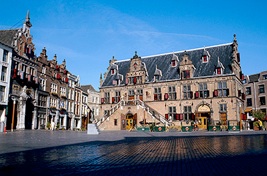
Nijmegen and the river Waal
The oldest town in the Netherlands, NIJMEGEN, was built on the site of the Roman frontier fortress of Novio Magus, from which it derives its name. Situated on the southern bank of the Waal, just to the west of its junction with the Rhine, the town's location has long been strategically important. The Romans used Nijmegen as a buffer against the unruly tribes to the east; Charlemagne, Holy Roman Emperor from 800 to 814, made the town one of the principal seats of his administration, building the Valkhof Palace, an enormous complex of chapels and secular buildings completed in the eighth century. Rebuilt in 1155 by another emperor, Frederick Barbarossa, the complex dominated Nijmegen right up until 1769, when the palace was demolished and the stonework sold; what was left suffered further demolition when the French occupied the town in 1796. In September 1944, the town's bridges were a key objective of Operation Market Garden and although these were captured by the Americans, the disaster at Arnhem put the town on the front line for the rest of the war. The results are clear to see: the old town was largely destroyed and has been replaced by a centre reconstructed to a new plan. (Below: Nijmegen on a world map)
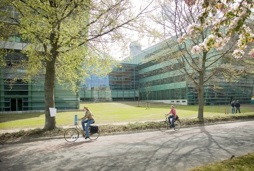
The Institute of Computing and Information Sciences (ICIS) at the Radboud University Nijmegen would like to host ITP11, the 2nd International Conference on Interactive Theorem Proving, in Nijmegen, The Netherlands.
(A picture of our building on the right)
